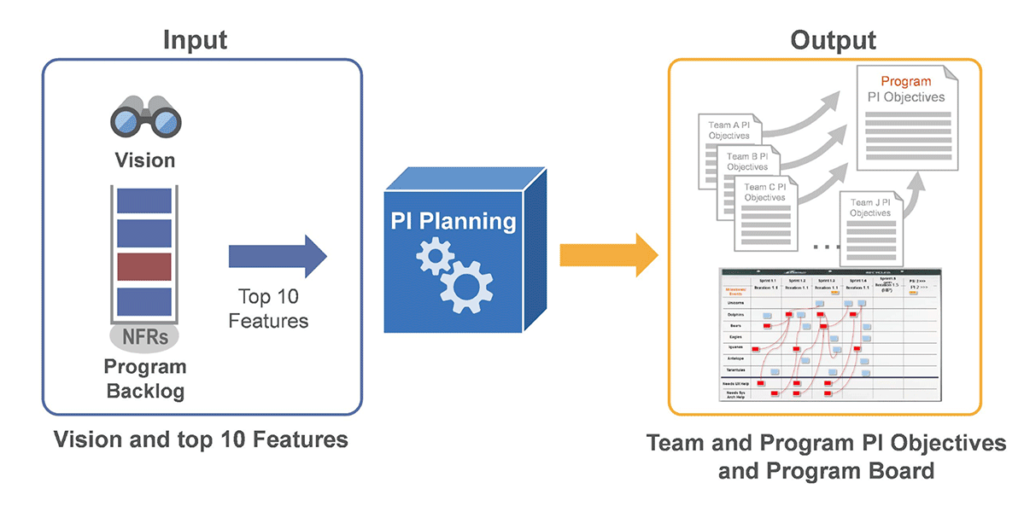How to Successfully Conduct a PI Planning Session ?
PI Planning is a crucial step in scaled Agile project management frameworks such as SAFe (Scaled Agile Framework). Here are some tips for successfully conducting this essential step: Here are some tips for successfully conducting this essential step:
1. Advance Preparation
- Team Preparation: Ensure that every team member understands their role and the objectives of the PI Planning session.
- Logistics and Resources: Prepare the spaces, tools (like whiteboards, post-it notes, online collaboration software) and ensure everything is technically functional.
- Preparatory Documentation: Provide all stakeholders with feature backlogs, product vision and roadmap, and any other relevant documents.
2. Clear Communication of Objectives
- Vision and Context: Start with a clear presentation of the vision, business objectives, and market context to align all teams towards common goals.
- Expectations: Clearly define the expectations for the PI Planning, including the goals to be achieved and the expected outcomes.
3. Effective Time Management
- Structured Agenda: Define a precise agenda with breaks, full group and breakout sessions. This helps keep engagement and productivity high throughout the session.
- Time Adherence: Keep each session within its allotted time to prevent fatigue and disengagement.
4. Collaboration and Interaction
- Facilitation Techniques: Use facilitation techniques to encourage active participation, such as brainstorming or workshops in small groups.
- Conflict Resolution: Be prepared to intervene in case of conflicts or disagreements to maintain a collaborative environment.
5. Stakeholder Engagement
- Presence of Decision-Makers: Ensure that decision-makers and key stakeholders are present and engaged during the process to make quick and informed decisions.
- Regular Feedback: Encourage constructive feedback and real-time responses to adjust plans on the fly.
6. Using Appropriate Tools
- Collaboration Tools: Use suitable online project management and collaboration tools to document discussions, decisions, and plans.
- Visualization: Help teams visualize their plans and dependencies with clear mappings and Gantt charts, if necessary.
7. Review and Adjustments
- Summary and Adjustments: At the end of the session, summarize the commitments made, discuss risks and dependencies, and adjust plans as needed.
- Closure: End on a positive note with a clear closure and an overview of the next steps.
8. Post-PI Planning Follow-Up
- Documentation: Ensure that everything is well documented and accessible to all stakeholders.
- Follow-Up: Establish regular monitoring mechanisms to ensure that plans are being followed and adjusted if necessary.
By following these tips, you can maximize the success of your PI Planning, thus contributing to strategic alignment and operational efficiency of your large-scale projects.
